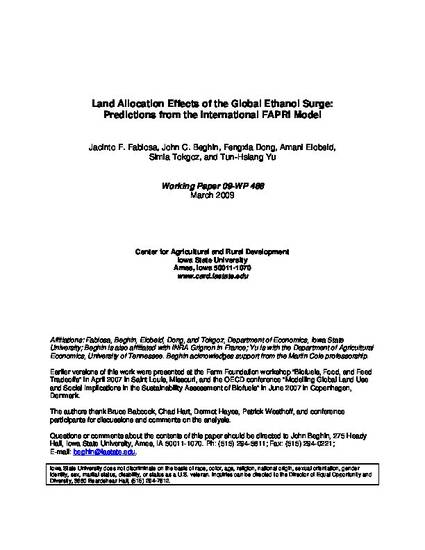
Article
Land Allocation Effects of the Global Ethanol Surge: Predictions from the International FAPRI Model
Land Economics
Document Type
Article
Disciplines
Publication Version
Submitted Manuscript
Publication Date
1-1-2010
Abstract
We quantify the emergence of biofuel markets and its impact on world agriculture using the multimarket, multicommodity international FAPRI model. The model incorporates trade-offs between biofuel, feed, and food production and consumption and international feedback effects of the emergence through world prices and trade. We shock the model with exogenous changes in ethanol demand, first in the United States, then in Brazil and other countries, and compute shock multipliers for land allocation decisions for important crops and countries. The Brazilian ethanol expansion using sugarcane has fewer consequences on existing arable land allocation than the U.S. ethanol expansion does using corn feedstock.
Citation Information
Jacinto F. Fabiosa, John Beghin, Fengxia Dong, Amani Elobeid, et al.. "Land Allocation Effects of the Global Ethanol Surge: Predictions from the International FAPRI Model" Land Economics Vol. 86 Iss. 4 (2010) p. 687 - 706 Available at: http://works.bepress.com/john-beghin/118/

This is a working paper of an article from Land Economics 86 (2010): 687.